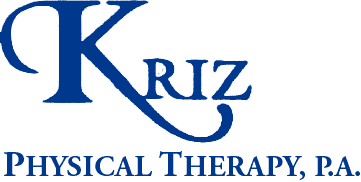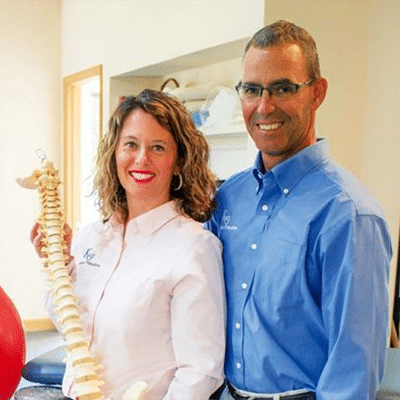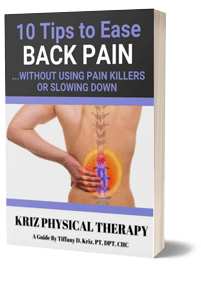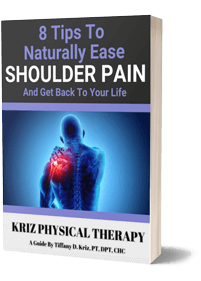Introduction
Neck pain is one of the most common complaints among adults today. Whether it’s due to posture, prolonged screen time, whiplash, or chronic conditions, pain in the cervical spine can affect your ability to work, sleep, and enjoy daily life. The good news? Physical therapy can be an incredibly effective, non-invasive solution for restoring function, reducing discomfort, and preventing future problems.
In this blog, we’ll explore the structure of the cervical spine, common causes of neck pain, and how physical therapy helps patients recover strength, improve range of motion, and return to their daily routines with confidence.
Understanding the Cervical Spine
The cervical spine consists of the first seven vertebrae at the top of the spinal column—C1 through C7. It supports the weight of your head (which can weigh 10–12 pounds), protects the spinal cord, and allows for a wide range of motion including flexion, extension, rotation, and lateral bending.
Because it’s highly mobile and supports so much movement, the cervical spine is also particularly vulnerable to injury and strain. Even minor imbalances or repetitive stress can lead to discomfort and dysfunction over time.
Common Causes of Cervical Spine and Neck Pain
Neck pain can result from a wide range of factors. Here are some of the most common causes:
- Poor posture (especially forward head posture or tech neck)
- Herniated discs or degenerative disc disease
- Whiplash injuries
- Cervical radiculopathy (nerve irritation causing arm pain or numbness)
- Arthritis or cervical spondylosis
- Tension and muscle tightness due to stress
- Trauma or falls
- Post-surgical stiffness or rehabilitation needs
Whether the cause is sudden or chronic, targeted physical therapy plays a vital role in reducing symptoms and improving function.
When to Consider Physical Therapy for Neck Pain
Many people live with low-level neck discomfort for years, assuming it’s just part of aging or unavoidable. However, early intervention can stop minor symptoms from turning into major limitations.
You should consider seeing a physical therapist if you experience:
- Pain in the neck that limits motion or daily activity
- Radiating pain into the shoulder, arm, or upper back
- Numbness, tingling, or weakness in the arms or hands
- Headaches that start at the base of the skull
- Difficulty sleeping or getting comfortable
- Postural fatigue, stiffness, or tension in the neck and shoulders
Physical therapy can address all of these symptoms while helping you avoid medications or invasive treatments.
How Physical Therapy Helps the Cervical Spine
Physical therapy for the neck isn’t about quick fixes—it’s about understanding the root cause of your symptoms and creating a tailored plan to restore balance, alignment, and function.
Here are some of the core components of a physical therapy plan for cervical spine issues:
1. Comprehensive Assessment
Your physical therapist will begin with a detailed evaluation, which includes:
- Reviewing your medical and injury history
- Assessing posture, range of motion, and flexibility
- Identifying muscular imbalances or joint restrictions
- Checking for nerve involvement or referred symptoms
- Understanding lifestyle habits (workstation setup, sleep position, etc.)
This thorough evaluation ensures your treatment plan addresses not just symptoms, but the underlying issues.
2. Manual Therapy Techniques
Hands-on therapy can help restore joint mobility, reduce muscle tightness, and improve circulation to affected areas. Techniques may include:
- Joint mobilization to improve vertebral movement
- Soft tissue mobilization for tight muscles and fascia
- Myofascial release for chronic tension points
- Trigger point therapy to address pain referral patterns
These gentle but targeted methods often bring immediate relief and prepare the body for strengthening and stretching work.
3. Posture Correction and Ergonomic Guidance
Many cervical spine issues stem from poor posture—especially in today’s tech-driven world.
Your therapist will work with you to:
- Re-educate proper head and neck alignment
- Improve core and upper back strength to support posture
- Recommend changes to your desk, chair, or sleeping position
- Teach you how to take movement breaks throughout the day
Postural correction is often one of the most transformative parts of a neck rehab program.
4. Targeted Stretching and Strengthening
Once pain is under control, the next goal is to strengthen the muscles that support your head, neck, and shoulders—reducing the likelihood of future problems.
Your PT may include exercises such as:
- Chin tucks to activate deep neck flexors
- Scapular retraction drills for upper back support
- Upper trapezius and levator scapulae stretches
- Resistance band exercises to build shoulder and neck endurance
- Core strengthening to support spinal alignment
Exercises are always prescribed gradually to avoid aggravating symptoms while building strength safely.
5. Neural Mobility and Nerve Gliding Techniques
If symptoms involve tingling, numbness, or pain radiating into the arms or hands, your therapist may include neural mobility work.
These gentle movements improve the way nerves move through soft tissue pathways, reducing irritation and restoring function. This is especially helpful in conditions like cervical radiculopathy or thoracic outlet syndrome.
6. Education and Prevention
Your therapist will provide you with tools to prevent flare-ups and protect your neck long after therapy ends. This includes:
- Strategies for avoiding “text neck”
- Guidance on lifting and carrying safely
- Head positioning tips while driving, reading, or working
- Home exercises to maintain strength and flexibility
By empowering you with knowledge, your therapist ensures lasting results and better long-term spinal health.
Common Conditions Treated Through Cervical Spine Physical Therapy
Here’s a closer look at how PT supports recovery from common neck-related issues:
1. Cervical Disc Herniation
A herniated disc in the neck can cause pain, arm weakness, and nerve symptoms. PT reduces pressure on the disc through traction, postural correction, and targeted exercises that promote healing.
2. Whiplash
Often caused by car accidents, whiplash results in muscle strain, stiffness, and dizziness. PT helps restore normal movement, reduce inflammation, and prevent chronic pain from developing.
3. Cervical Spondylosis (Neck Arthritis)
Wear and tear in the cervical spine can lead to stiffness and nerve compression. PT reduces inflammation and keeps the neck moving well despite arthritic changes.
4. Postural Neck Pain
Forward head posture, common in desk workers and teens, leads to chronic muscle fatigue. PT restores alignment and strength to reduce long-term wear and tear.
5. Tension Headaches
Pain starting at the base of the skull and wrapping around the head is often posture-related. PT techniques relieve muscle tension and improve alignment to prevent future headaches.
The Benefits of Physical Therapy Over Other Treatments
Why choose physical therapy over medication or surgery?
- It’s safe and non-invasive
- It addresses root causes, not just symptoms
- It improves your overall strength and mobility
- It teaches lifelong strategies to prevent recurrence
- It often leads to faster recovery with fewer complications
Many people see lasting improvements in neck pain and function in just a few sessions—and more importantly, they gain tools they can continue using at home.
When to Seek Help
If you’ve been dealing with neck discomfort for more than a few days—or if it’s affecting your sleep, mood, or daily activities—don’t wait.
Getting help early can prevent the issue from becoming chronic or more serious.
Your physical therapist will work with your primary doctor or specialist if needed, and provide a detailed roadmap for recovery.
Conclusion: You Don’t Have to Live with Neck Pain
Neck pain may be common—but that doesn’t mean it should be part of your everyday life.
Physical therapy for the cervical spine is about more than managing pain—it’s about restoring your freedom to move, work, and enjoy life without fear of flare-ups or limitations.
At Kriz Physical Therapy, we offer personalized neck assessments, hands-on treatments, and expert guidance to help you feel and function your best. Whether your pain is new or ongoing, we’re here to help you regain control and comfort.
Take the first step today. Book your Free Discovery Visit now and let’s talk about how we can help.
📞 Call (239) 992-6700
🌐 Visit: https://krizphysicaltherapy.com/discovery-session
Because life feels better when your neck does too.




